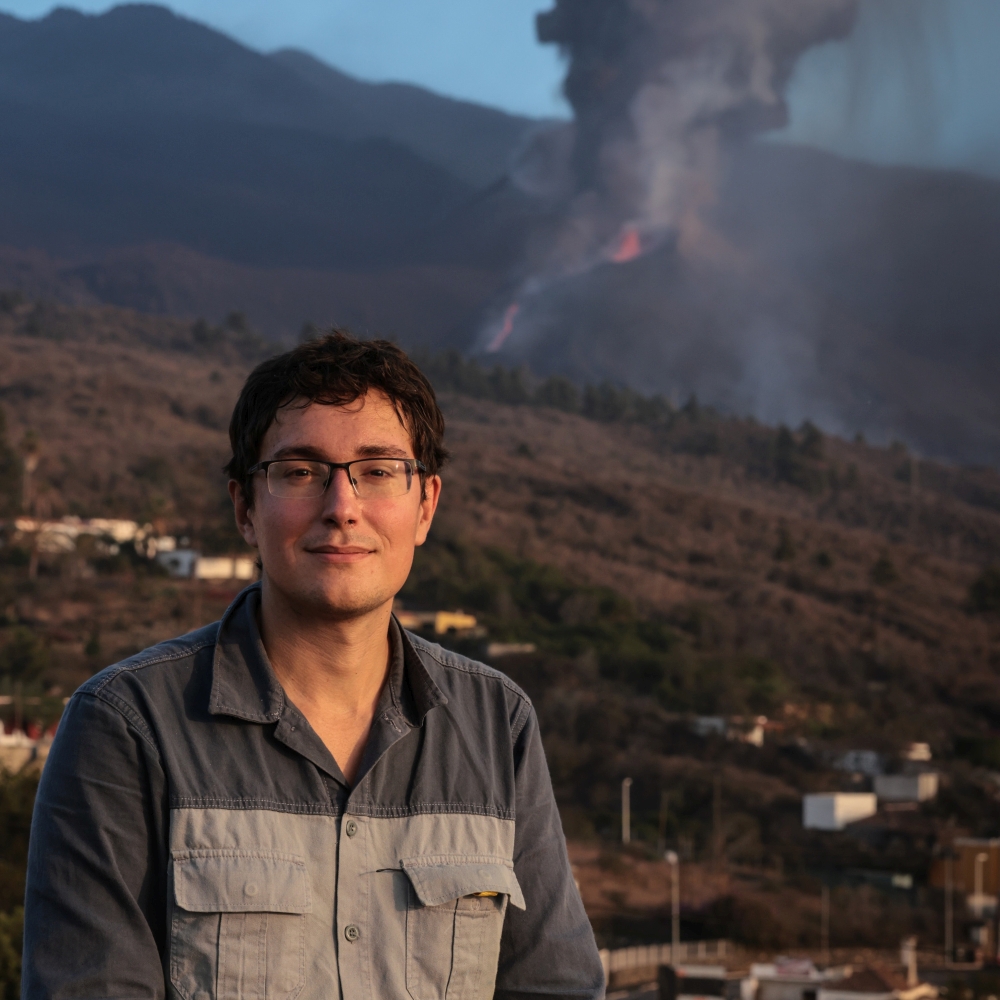You are here :
- EUTOPIA website
- Home
- Research & Innovation
- Fellowship
- SIF - Post-Doctoral Fellowships
SIF 2nd Cohort Fellows - Jean-Guillaume Feignon, Vrije Universiteit Brussel

Curriculum Vitae
- Education
2017–2022 PhD in Natural Sciences, speciality: Earth Sciences, Department of Lithospheric Research, University of Vienna (Austria).
2013–2015 Master (M.Sc.) in Earth Sciences, speciality: Volcanology, Laboratoire Magmas et Volcans, Blaise Pascal University, Clermont-Ferrand (France).
2010–2013 Bachelor (B.Sc.) in Earth Sciences, Blaise Pascal University, Clermont-Ferrand (France).
- Experience
PhD project: Petrography, shock metamorphism, and geochemistry of the impactites from the Chicxulub impact crater peak ring IODP-ICDP Expedition 364 drill core.
January 2016– June 2017 Invited student staff, Laboratoire Magmas et Volcans, Blaise Pascal University, Clermont-Ferrand (France).
Complementary analysis of melt inclusions from 1750 BP eruption of the Mocho-Choshuenco volcano (Chile).
January 2015–June 2015 Master internship, Laboratoire Magmas et Volcans, Blaise Pascal University, Clermont-Ferrand (France).
Research project: Characterization and analysis of pyroclastic deposits and melt inclusions of an explosive volcanic eruption of the Mocho-Choshuenco volcano, Chile.
April 2014–May 2014 Master internship, Laboratoire Magmas et Volcans, Blaise Pascal University, Clermont-Ferrand (France).
Research project: Analysis of volcanic glass contained in MD11-3349 core sampled offshore La Réunion Island and dating.
- Publications/Research achievements
Ten papers published in refereed journals, including four as first author.
Regular participation to international scientific conferences.
Awarded in 2019 the Barringer Family Fund for Meteorite Impact Research for field work in order to explore the possible Bateke impact structure in Gabon.
Public outreach through interviews in general French medias (France Info, Le Parisien).
Regular lectures and guided field trips in the framework of the European Volcanological Association (L.A.V.E.).
Research Project:
Formation and Emplacement of Accretionary Lapilli and Pyroclastic Deposits in Impact Structures and Volcanic Eruptions
In particle-rich environments, particle aggregation is a common process. It occurs in many diverse particulate gas mixtures (e.g., derived from explosive volcanic eruptions, or meteorite impact events) following collision and adhesion of suspended particles within turbulent gas/air. The largest bonded aggregates (size between ~4–32 mm), are termed “accretionary lapilli”. Characterization and formation processes of accretionary lapilli have extensively been documented and studied in the case of explosive volcanic eruptions. They are commonly preserved in volcanic deposits, e.g., Tenerife (Canary Islands), Laacher See (Germany), Soufriere Hills (Montserrat); more specifically in pyroclastic density current or ignimbrite deposits, formed during explosive volcanic eruptions.
In contrast, meteorite impact-generated accretionary lapilli remain poorly characterized to date. Several formation models have been proposed to explain their formation, during impact events, with currently still no consensus. Nevertheless, they constitute an important component of the impact cratering process, especially in the case of large impact events, such as Chicxulub, Mexico (~180–200 km diameter) and Sudbury, Canada (~260 km diameter). In the case of Chicxulub, detailed study is still needed to better understand how accretionary lapilli, and more broadly the impact ejecta, were emplaced, as well as to document how they interacted with the atmosphere.
This project deals with the formation and emplacement mechanisms of accretionary lapilli during large impact events by using a volcanological approach. Investigating the interaction of the impact plume particles with the atmosphere is key to quantify and model their effects (both short and long term) on Earth’s climate. Detailed petrographic and geochemical investigations on both impact-related and volcanic accretionary lapilli, as well as field work (sampling and distribution mapping), leads to improved formation and deposition models with better constraints on temperature, shock pressure, timescale, and possible incorporation of projectile component. Comparative work is planned between several impact structures such as Chicxulub, Sudbury, Ries (Germany), to develop a robust and comprehensive model of particle aggregation during impact events. The last step assesses and compares the climatic effects of volcanic and impact plumes on the terrestrial atmosphere and examines possible perturbation(s) induced by the injection of such large volumes of dust over a short period of time.
This project is carried out at the Vrije Universiteit Brussel (VUB), within the Analytical, Environmental, and Geo-Chemistry Research Group (AMGC), and co-hosted by the Cergy Geosciences and Environment Laboratory (GEC) research group of the Cergy University (CYU), proposing a wide range of analytical techniques.
Research domain:
| My research focuses on understanding extreme geological and natural phenomena such as meteorite impact events and volcanic eruptions, which shaped Earth's climate and biosphere. My research combines fieldwork, petrography, geochemistry, compared with or integrated to modeling, building interdisciplinary approaches and fostering international collaboration. Public science communication is also important, comparing the phenomenon I study with modern global changes. Research during my MSc in volcanology at Laboratoire Magmas et Volcans (France) focused on: (1) tephrochronology, with the characterization, identification, and dating of tephra deposits within a drill core recovered offshore La Réunion Island, further linked to on-land eruptions from Piton des Neiges volcano; and (2) petrography and melt inclusion analysis from pyroclastic deposits from Mocho-Choshuenco volcano (Chile), with a focus on high-CO2 content in its magma, a key driver of its explosivity. Then, I pursued a PhD at the Department of Lithospheric Research (University of Vienna, Austria) focused on the petrography, geochemistry, and shock metamorphism of the impactites from the Chicxulub impact structure peak ring (Yucatan Peninsula, Mexico) recovered during the IODP-ICDP Expedition 364. This impact event is well-known to be linked with the non-avian dinosaur’s extinction, ca. 66 million years ago. My research brought new insights on shock pressures experienced by the granitic basement of the peak ring, the pre-impact geology of the Yucatan peninsula, and the fate of the projectile upon impact by searching for meteoritic contamination in impact melt rock material. Results were published in several peer-reviewed publications. Following my PhD, I was awarded a two-years EUTOPIA-SIF postdoctoral fellowship at Archaeology, Environmental Changes, & Geo-Chemistry (AMGC, Vrije Universiteit Brussel, Belgium). The project brings together impact cratering and volcanology, focusing on the aggregation processes of particles occurring within the proximal ejecta deposits of large impact events, compared with explosive volcanic eruption. A new classification of impact-generated aggregates was developed, and new insights on the dynamics and emplacement processes of impact ejecta. |


